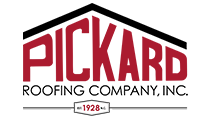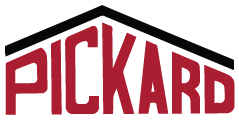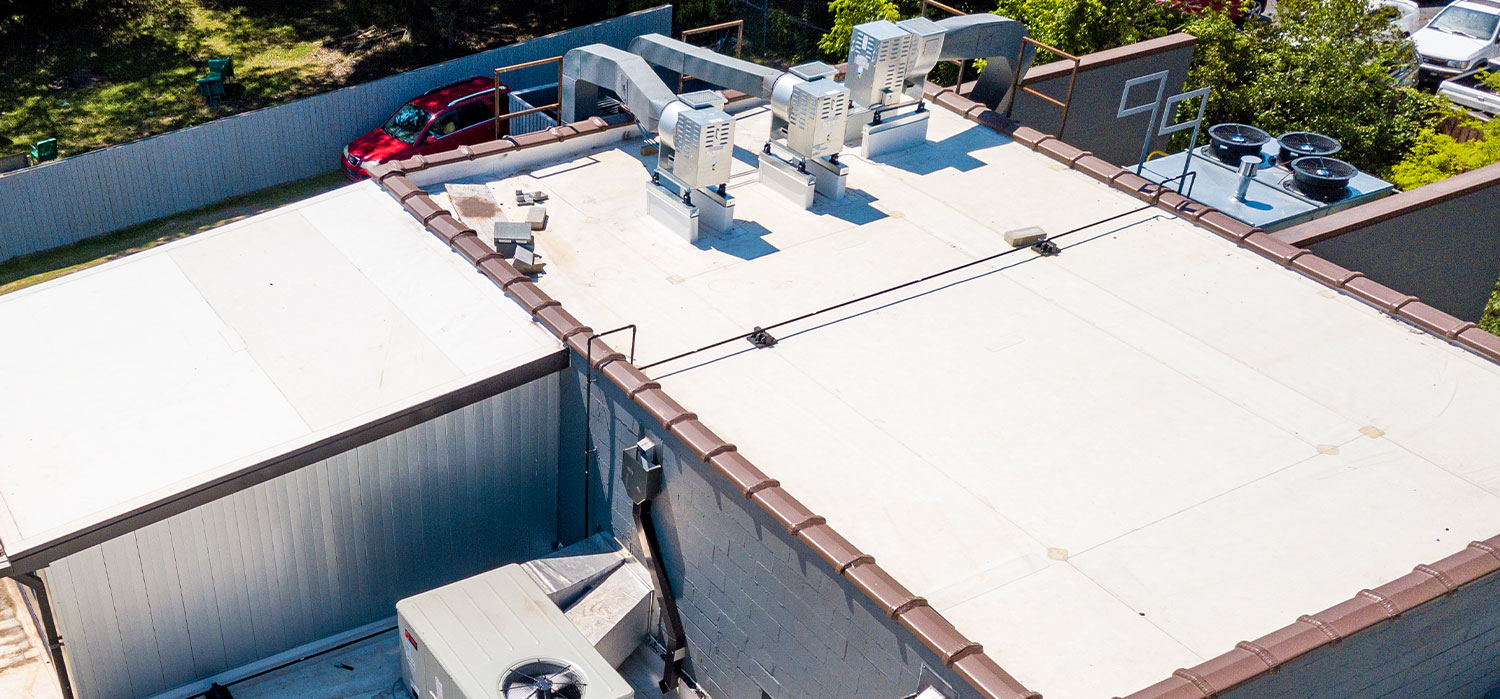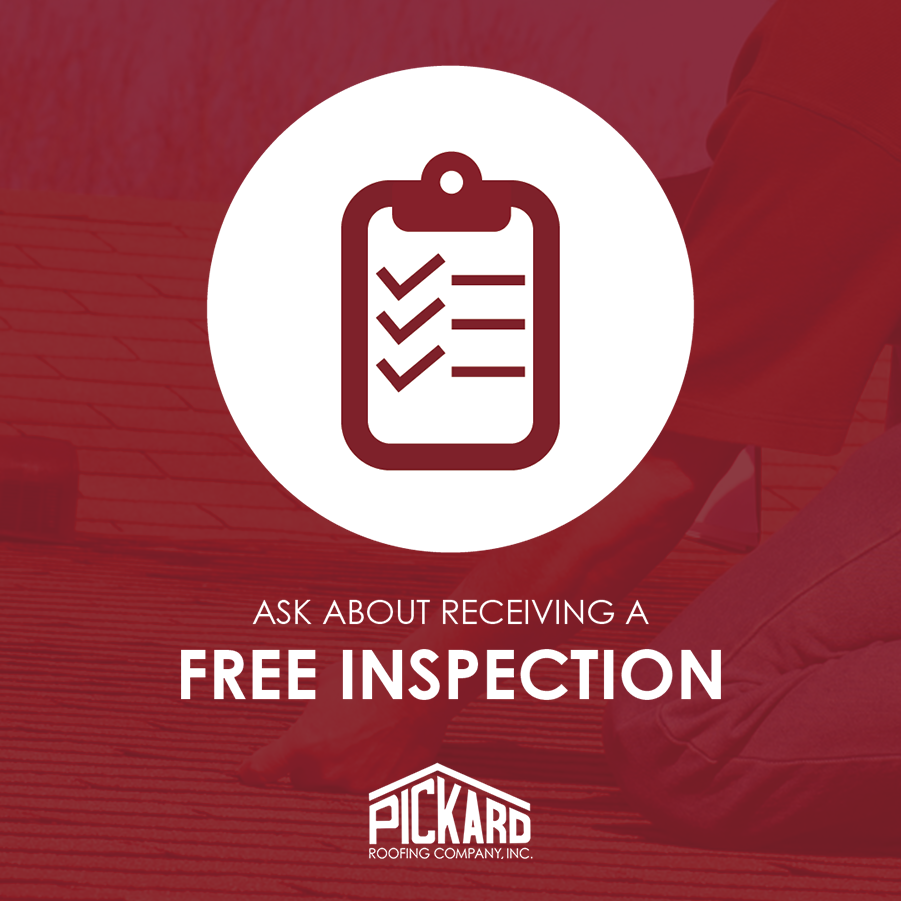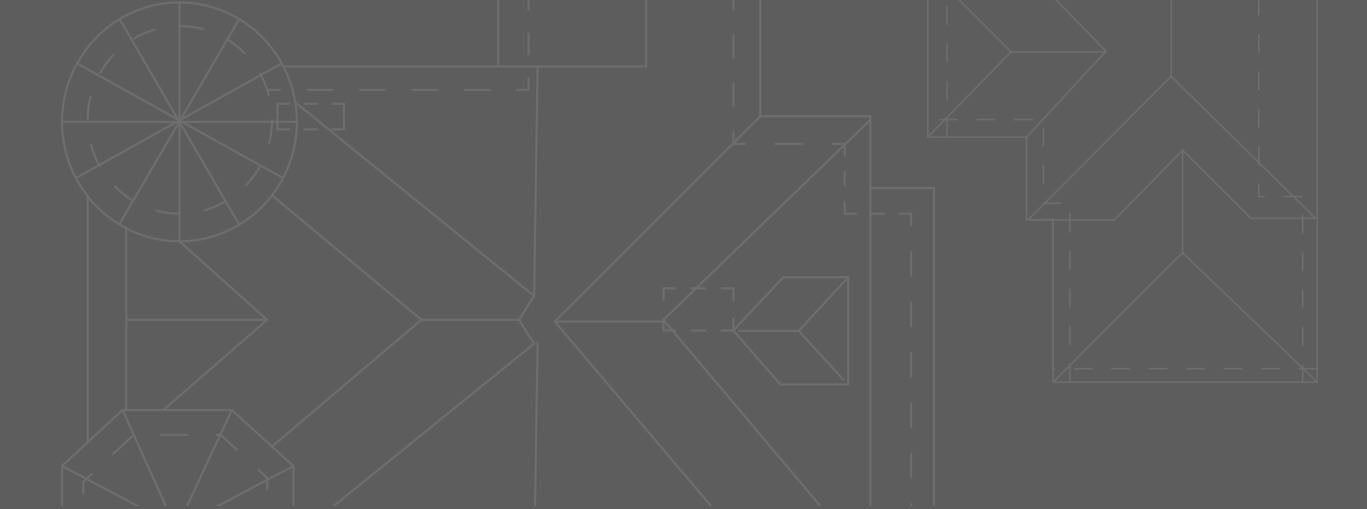Replacing a roof is a significant capital cost for the owners of commercial buildings. Many commercial buildings will undergo multiple rounds of roof repairs before it is clear that a roof replacement is the best option. But when it is time to replace the roof, there are five factors that determine how great the roof replacement expense will be.
1. Roofing Material
Different types of roofing materials will result in different costs.
Flat roofs can often be replaced with single-ply systems.
A single-ply roof, also known as a membrane roof, is a sheet of rubber or other synthetic materials that can be attached to the frame with ballast or chemical adhesives. There are three main types of single-ply membrane roofs, EPDM, TPO, and PVC, the ethylene propylene diene monomer or rubber roof, the thermoplastic roof, and the polyvinyl chloride roof.
Each material has its pros and cons:
- EPDM usually comes in at the lowest cost per square foot. It is easy to install over polyiso insulation, and it lowers air conditioning costs if it is applied in white. But EPDM can become fragile at the end of its 20-year life, and black EPDM roofs are not pretty to look at.
- TPO reflects heat better than EPDM. It's resistant to mold, hail, and the effects of air pollution. But it may not have as long a useful life as EPDM.
- PVC is fire-resistant, recyclable, and eco-friendly. When looking at green-roofing options for commercial rooms, PVC is a solid eco-friendly choice.
Sloped roofs can be built with a variety of materials, with asphalt-based built-up roofing (BUR) being the most common. BUR roofs often outlive their warranties, lasting for 50 years or more. But their installation is even more labor-intensive than for other materials.
No matter which type of roof is being replaced, the replacement cost is proportional to the coverage area. Larger roofs cost more to replace than smaller roofs, and thicker material costs more than thinner material. Furthermore, insulation adds to the cost of roofing, and steeper roofs cost more to replace than flatter roofs.
But these aren't the only factors that go into the cost of replacing a roof.
2. Rooftop Accessibility
Roof accessibility is an essential factor in commercial roof replacement costs. Getting materials to the top of a one-story building is totally different than getting them to the top of a ten-story building. The taller the building, the farther materials must be hauled or lifted. This means extra man-hours and possibly extra equipment like lifts or cranes.
Ten stories up is also ten stories down. Roof replacement on a tall building also has added costs to get the existing roof off the building.
How accessible are the roofing materials on the job site? Hauling materials to the site day by day because there are no secure places to store them near the job also adds cost.
3. Roof Decking
Every roof is installed on the roof deck. The decking can be a variety of different materials from wood, metal, and tectum . The big unknown is the quality of that deck. In some cases the underside of the roof system is exposed and the amount of deterioration can be determined by a licensed roofing contractor. In many cases roof decking can not be fully inspected, and deck repairs will have to be assessed as the work is being done. It is important to have an agreed upon price per linear foot for decking repairs before the contract is signed. If it’s in great shape, some costs can be saved. For many roofs, the deck needs work. Can it be repaired, or does it need to be replaced? Prices will vary depending on how much work and materials are required.
Some roofing contractors will take shortcuts with what’s under your roof. To them, it’s added costs and a quick way to boost their bottom line. At Pickard Roofing, we take the ‘long-term view.’ This means that the decking is just as important as the roofing material, and it’s a corner we will not cut.
4. Fasteners and Wind Loads
State, regional, county, and city building codes often specify fasteners and the wind load a replacement roof must be able to handle. The stricter the code, the higher the cost of compliance.
5. Other Building Code Requirements
Building code requirements are constantly changing. There is a constant push to make sure roofs are resistant to wind, fire, cold, and interactions with wildlife (for instance, pigeons). Roofs that were put on a building in a time when codes were less strict may have to be replaced under newer, more rigid, more complex code requirements. It's essential to hire a commercial roofing contractor who knows the relevant codes for your building and is ready to meet them.
North Carolina’s roof replacement experts.
The pros at Pickard Roofing can meet all your commercial roofing needs in North Carolina. Call us today at 919-682-5702 for more information.
At Pickard Roofing, we think Design. Craft. Renew. We are experienced in all types of roofing systems- and provide the right roofing design and selective craftsmanship for renewing our customer’s assets. We invite sustainable building customers to give us a call for your free evaluation. For over 90 years Pickard Roofing Company has installed countless metal, tile, slate, TPO, EPDM, and all types of shingle roofing in the Triangle. Our services include residential, commercial, custom architectural metal fabrication, and historical renovation.
